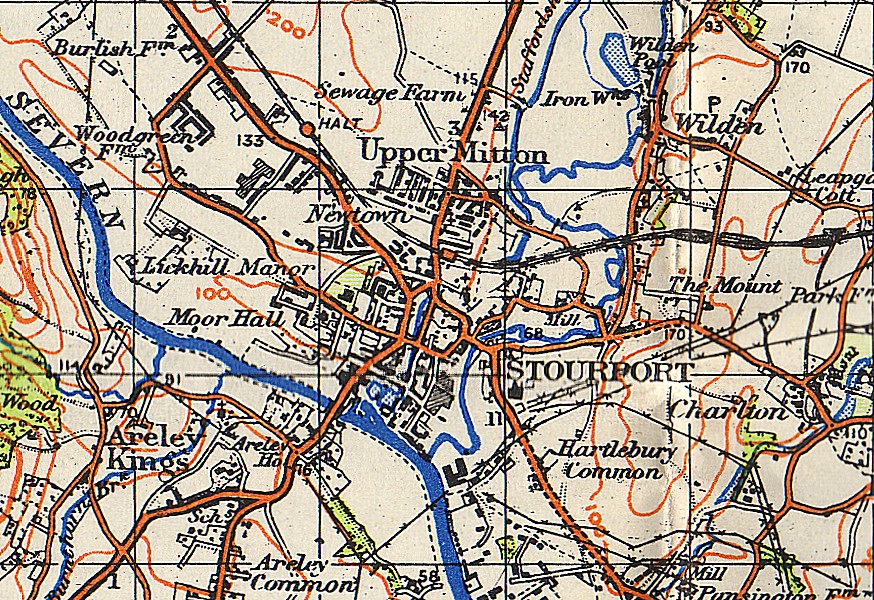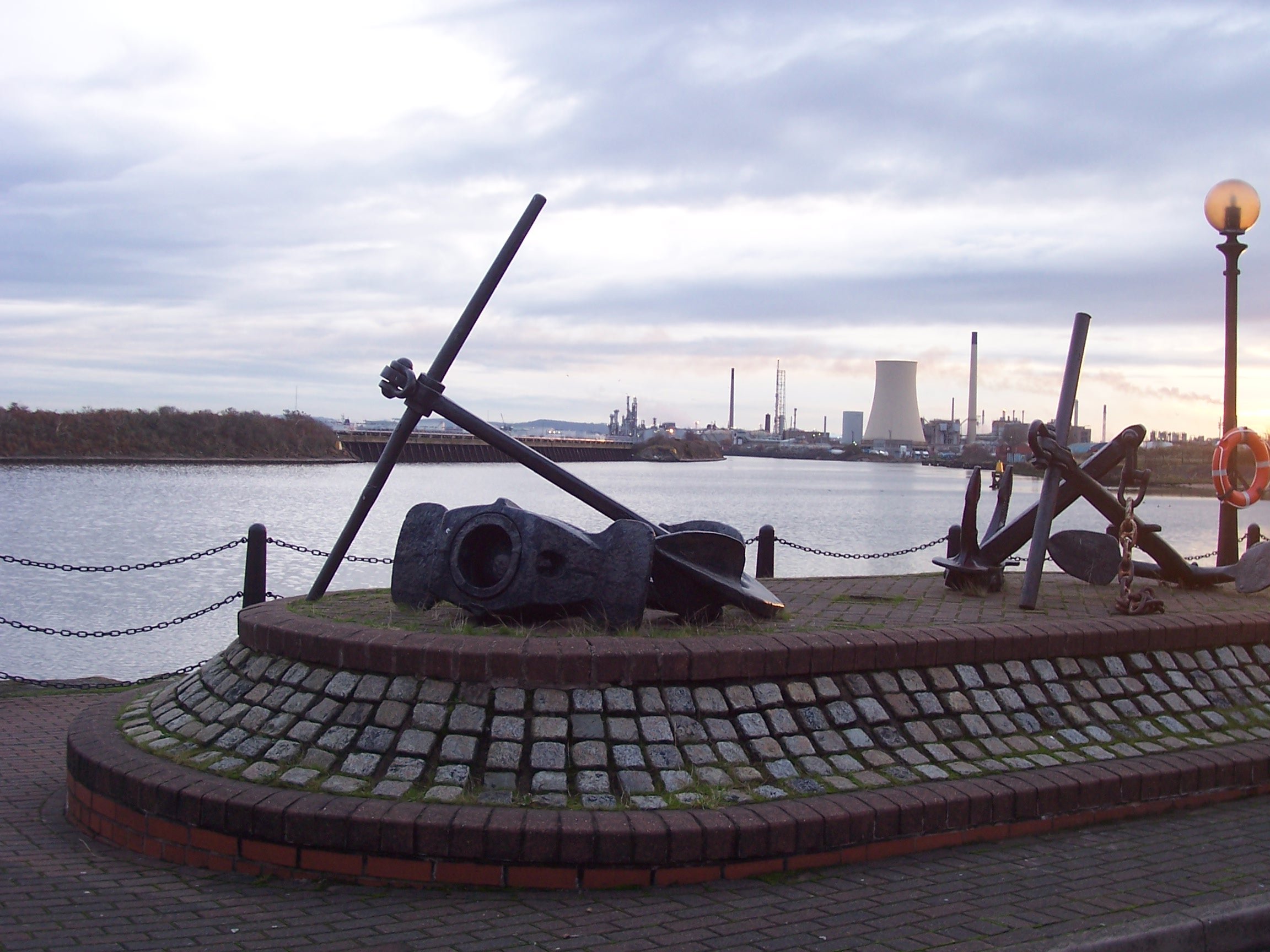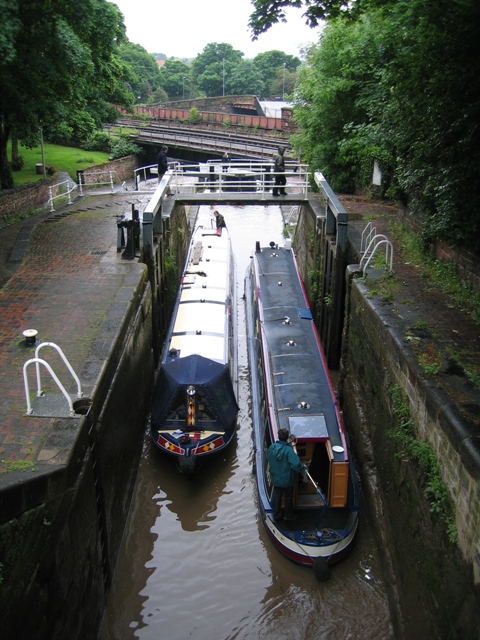|
Autherley Junction
Autherley Junction () is the name of the canal junction where the Shropshire Union Canal terminates and meets the Staffordshire and Worcestershire Canal near to Oxley, north Wolverhampton, West Midlands, England. History The Staffordshire and Worcestershire Canal was opened in 1772. It provided a link between the Trent and Mersey Canal at Great Haywood Junction in the north and the River Severn at Stourport in the south. A significant trade soon developed between the Potteries and the south west. to the south of the junction site, the canal was joined by the Birmingham Canal Navigations at Aldersley Junction, which provided a route for manufactured goods to pass northwards. In 1835, the Birmingham and Liverpool Junction Canal opened, connecting the Chester Canal at Nantwich to the Staffordshire and Worcestershire at Autherley. It was one of the new generation of canals, which instead of following the contours, used cuttings and embankments to provide a more direct route, and ... [...More Info...] [...Related Items...] OR: [Wikipedia] [Google] [Baidu] |
Narrowboat
A narrowboat is a particular type of canal boat, built to fit the narrow locks of the United Kingdom. The UK's canal system provided a nationwide transport network during the Industrial Revolution, but with the advent of the railways, commercial canal traffic gradually diminished and the last regular long-distance transportation of goods by canal had virtually disappeared by 1970. However, some commercial traffic continued. From the 1970s onward narrowboats were gradually being converted into permanent residences or as holiday lettings. Currently, about 8580 narrowboats are registered as 'permanent homes' on Britain's waterway system and represent a growing alternative community living on semi-permanent moorings or continuously cruising. For any boat to enter a narrow lock, it must be under wide, so most narrowboats are nominally wide. A narrowboat's maximum length is generally , as anything longer will be unable to navigate much of the British canal network, because the n ... [...More Info...] [...Related Items...] OR: [Wikipedia] [Google] [Baidu] |
Stourport
Stourport-on-Severn, often shortened to Stourport, is a town and civil parish in the Wyre Forest District of North Worcestershire, England, a few miles to the south of Kidderminster and downstream on the River Severn from Bewdley. At the 2011 census, it had a population of 20,292. History and early growth Stourport came into being around the canal basins at the Severn terminus of the Staffordshire and Worcestershire Canal, which was completed in 1768. In 1772 the junction between the Staffordshire and Worcestershire and the Birmingham Canal was completed and Stourport became one of the principal distributing centres for goods to and from the rest of the West Midlands. The canal terminus was built on meadowland to the south west of the hamlet of Lower Mitton. The terminus was first called Stourmouth and then Newport, with the final name of Stourport settled on by 1771. The population of Stourport rose from about 12 in the 1760s to 1300 in 1795. In 1771 John Wesley had called ... [...More Info...] [...Related Items...] OR: [Wikipedia] [Google] [Baidu] |
Canal Junctions In England
Canals or artificial waterways are waterways or river engineering, engineered channel (geography), channels built for drainage management (e.g. flood control and irrigation) or for conveyancing water transport watercraft, vehicles (e.g. water taxi). They carry free, calm surface flow under atmospheric pressure, and can be thought of as artificial rivers. In most cases, a canal has a series of dams and lock (water transport), locks that create reservoirs of low speed current flow. These reservoirs are referred to as ''slack water levels'', often just called ''levels''. A canal can be called a ''navigation canal'' when it parallels a natural river and shares part of the latter's discharge (hydrology), discharges and drainage basin, and leverages its resources by building dams and locks to increase and lengthen its stretches of slack water levels while staying in its valley. A canal can cut across a drainage divide atop a ridge, generally requiring an external water source ... [...More Info...] [...Related Items...] OR: [Wikipedia] [Google] [Baidu] |
List Of Canal Junctions In Great Britain ...
This List of canal junctions in the United Kingdom is an incomplete list of canal junctions in the United Kingdom that have articles in Wikipedia, in alphabetical order. See also *Junction (canal) *Canals of Great Britain *History of the British canal system *List of canal aqueducts in the United Kingdom *List of canal basins in the United Kingdom * List of canal locks in the United Kingdom *List of canal tunnels in the United Kingdom References {{DEFAULTSORT:List Of Canal Junctions In The United Kingdom Canals in the United Kingdom * Canal junctions Canal Canals or artificial waterways are waterways or engineered channels built for drainage management (e.g. flood control and irrigation) or for conveyancing water transport vehicles (e.g. water taxi). They carry free, calm surface flow un ... [...More Info...] [...Related Items...] OR: [Wikipedia] [Google] [Baidu] |
Canal & River Trust
The Canal & River Trust (CRT), branded as in Wales, holds the guardianship of 2,000 miles of canals and rivers, together with reservoirs and a wide range of heritage buildings and structures, in England and Wales. Launched on 12 July 2012, the Trust took over the responsibilities of the state-owned British Waterways in those two places. History The concept of a National Waterways Conservancy was first championed and articulated in the 1960s by Robert Aickman, the co-founder of the Inland Waterways Association, as a way to secure the future of Britain's threatened inland waterways network. The idea was revived by the management of British Waterways in 2008 in response to increasing cuts in grant-in-aid funding, a drop in commercial income after the financial crisis of 2007–2008 and growing calls by waterway users for a greater say in the running of the waterways. On 18 May 2009, launching 'Twenty Twenty – a vision for the future of our canals and rivers' on the terrace of ... [...More Info...] [...Related Items...] OR: [Wikipedia] [Google] [Baidu] |
Ellesmere Port
Ellesmere Port ( ) is a port town in the Cheshire West and Chester borough in Cheshire, England. Ellesmere Port is on the south eastern edge of the Wirral Peninsula, north of Chester, south of Birkenhead, southwest of Runcorn and south of Liverpool. The town had a population of 61,090 in the 2011 census. Ellesmere Port also forms part of the wider Birkenhead urban area, which had a population of 325,264 in 2011. The town was originally established on the River Mersey at the entrance to the Ellesmere Canal. As well as a service sector economy, it has retained large industries including Stanlow oil refinery, a chemical works and the Vauxhall Motors car factory. There are also a number of tourist attractions including the National Waterways Museum, the Blue Planet Aquarium and Cheshire Oaks Designer Outlet. History The town of Ellesmere Port was founded at the outlet of the never-completed Ellesmere Canal. The canal (now renamed) was designed and engineered by Wil ... [...More Info...] [...Related Items...] OR: [Wikipedia] [Google] [Baidu] |
Bill (proposed Law)
A bill is proposed legislation under consideration by a legislature. A bill does not become law until it is passed by the legislature as well as, in most cases, approved by the executive. Once a bill has been enacted into law, it is called an '' act of the legislature'', or a ''statute''. Bills are introduced in the legislature and are discussed, debated and voted upon. Usage The word ''bill'' is primarily used in Anglophone United Kingdom and United States, the parts of a bill are known as ''clauses'', until it has become an act of parliament, from which time the parts of the law are known as ''sections''. In Napoleonic law nations (including France, Belgium, Luxembourg, Spain and Portugal), a proposed law may be known as a "law project" (Fr. ''projet de loi''), which is a government-introduced bill, or a "law proposition" (Fr. ''proposition de loi''), a private member's bill. For example the Dutch parliamentary system does not make this terminological distinction (''wetsontwe ... [...More Info...] [...Related Items...] OR: [Wikipedia] [Google] [Baidu] |
Nantwich
Nantwich ( ) is a market town and civil parish in the unitary authority of Cheshire East in Cheshire, England. It has among the highest concentrations of listed buildings in England, with notably good examples of Tudor and Georgian architecture. It had a population of 14,045 in 2021. History The origins of the settlement date to Roman times, when salt from Nantwich was used by the Roman garrisons at Chester (Deva Victrix) and Stoke-on-Trent as a preservative and a condiment. Salt has been used in the production of Cheshire cheese and in the tanning industry, both products of the dairy industry based in the Cheshire Plain around the town. ''Nant'' comes from the Welsh for brook or stream. ''Wich'' and ''wych'' are names used to denote brine springs or wells. In 1194 there is a reference to the town as being called ''Nametwihc'', which would indicate it was once the site of a pre-Roman Celtic nemeton or sacred grove. In the Domesday Book, Nantwich is recorded as having eight salt ... [...More Info...] [...Related Items...] OR: [Wikipedia] [Google] [Baidu] |
Chester Canal
The Chester Canal was an English canal linking the south Cheshire town of Nantwich with the River Dee at Chester. It was intended to link Chester to Middlewich, with a branch to Nantwich, but the Trent and Mersey Canal were unco-operative about a junction at Middlewich, and so the route to Nantwich was opened in 1779. There were also difficulties negotiating with the River Dee Company, and with no possibility of through traffic, the canal was uneconomic. Part of it was closed in 1787, when Beeston staircase locks collapsed, and there was no money to fund repairs. When the Ellesmere Canal was proposed in 1790, the company saw it as a ray of hope, and somehow managed to keep the struggling canal open. The Ellesmere Canal provided a link to the River Mersey at Ellesmere Port from 1797, and the fortunes of the Chester Canal began to improve. The Ellesmere Canal was also building branches in North Wales, which were intended to link up to the River Dee at Chester, but eventually ... [...More Info...] [...Related Items...] OR: [Wikipedia] [Google] [Baidu] |
Birmingham And Liverpool Junction Canal
The Birmingham and Liverpool Junction Canal was a canal in England which ran from Nantwich, where it joined the Chester Canal, to Autherley, where it joined the Staffordshire and Worcestershire Canal. Forming part of a major link between Liverpool and the industrial heartlands of the Midlands, the canal was opened in 1835, and merged with the Ellesmere and Chester Canal Company in 1845, which became the Shropshire Union Railways and Canal Company in the following year. History In 1824, the Birmingham Canal was experiencing unprecedented levels of traffic, and asked the civil engineer Thomas Telford to recommend how the canal could be improved. He reported his suggestions in September, and probably also recommended that an additional link northwards from the western end to the River Mersey would be beneficial, since the Birmingham Canal Company described him as the 'originator and proposer' of the route in January 1825. Faced with competition from a proposed railway line from Bir ... [...More Info...] [...Related Items...] OR: [Wikipedia] [Google] [Baidu] |
Aldersley Junction
Aldersley Junction () is the name of the canal junction where the Birmingham Main Line Canal terminates and meets the Staffordshire and Worcestershire Canal near to Oxley, north Wolverhampton, West Midlands, England. It opened in 1772. History The Staffordshire and Worcestershire Canal opened in April 1772, connecting Great Haywood Junction on the Trent and Mersey Canal to Stourport on the River Severn. The Birmingham Canal was authorised by an Act of Parliament dated 24 February 1768. It would run from Birmingham to the Staffordshire and Worcestershire main line at Autherley, which was also known as Aldersley at the time. An unusual clause in the Act made provision for the Staffordshire and Worcestershire Canal to build the junction between the two canals themselves, if the Birmingham company failed to complete it within six months of opening their canal. They could also charge the Birmingham company for the full cost of the construction. The Birmingham company lost no time ... [...More Info...] [...Related Items...] OR: [Wikipedia] [Google] [Baidu] |
Birmingham Canal Navigations
Birmingham Canal Navigations (BCN) is a network of canals connecting Birmingham, Wolverhampton, and the eastern part of the Black Country. The BCN is connected to the rest of the English canal system at several junctions. It was owned and operated by the Birmingham Canal Navigations Company from 1767 to 1948. At its working peak, the BCN contained about 160 miles (257 km) of canals; today just over 100 miles (160 km) are navigable, and the majority of traffic is from tourist and residential narrowboats. History The earliest mention of the Birmingham Canal Navigation appears in Aris’s Birmingham Gazette on 11 April 1768 when it was reported that on 25 March 1768 the first general assembly of the Company of Proprietors of the Birmingham Canal Navigation was held at the Swann Inn, Birmingham, to raise funds to submit for an Act of Parliament. The first canal to be built in the area was the Birmingham Canal, authorised by the Birmingham Canal Navigation Act 1768 an ... [...More Info...] [...Related Items...] OR: [Wikipedia] [Google] [Baidu] |









